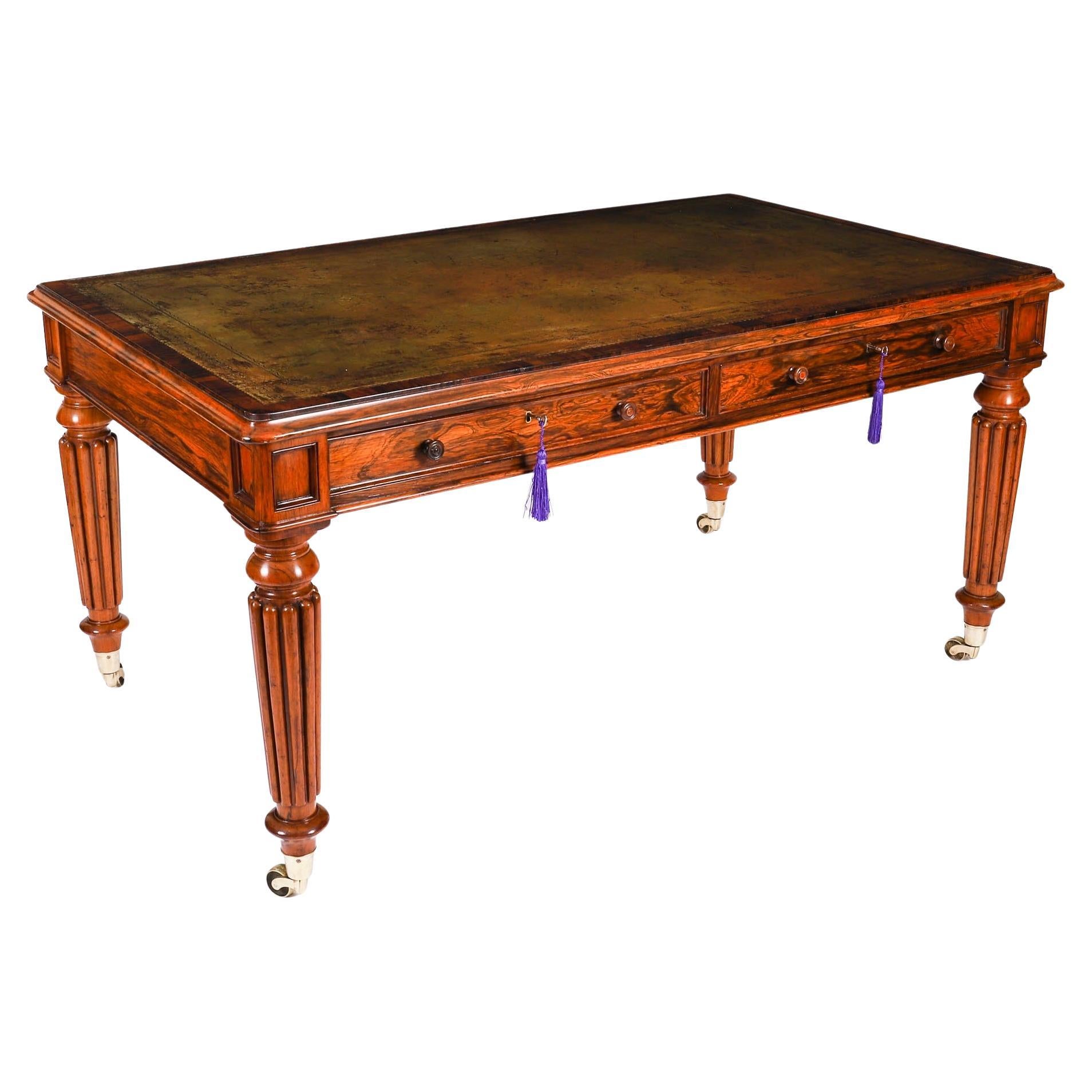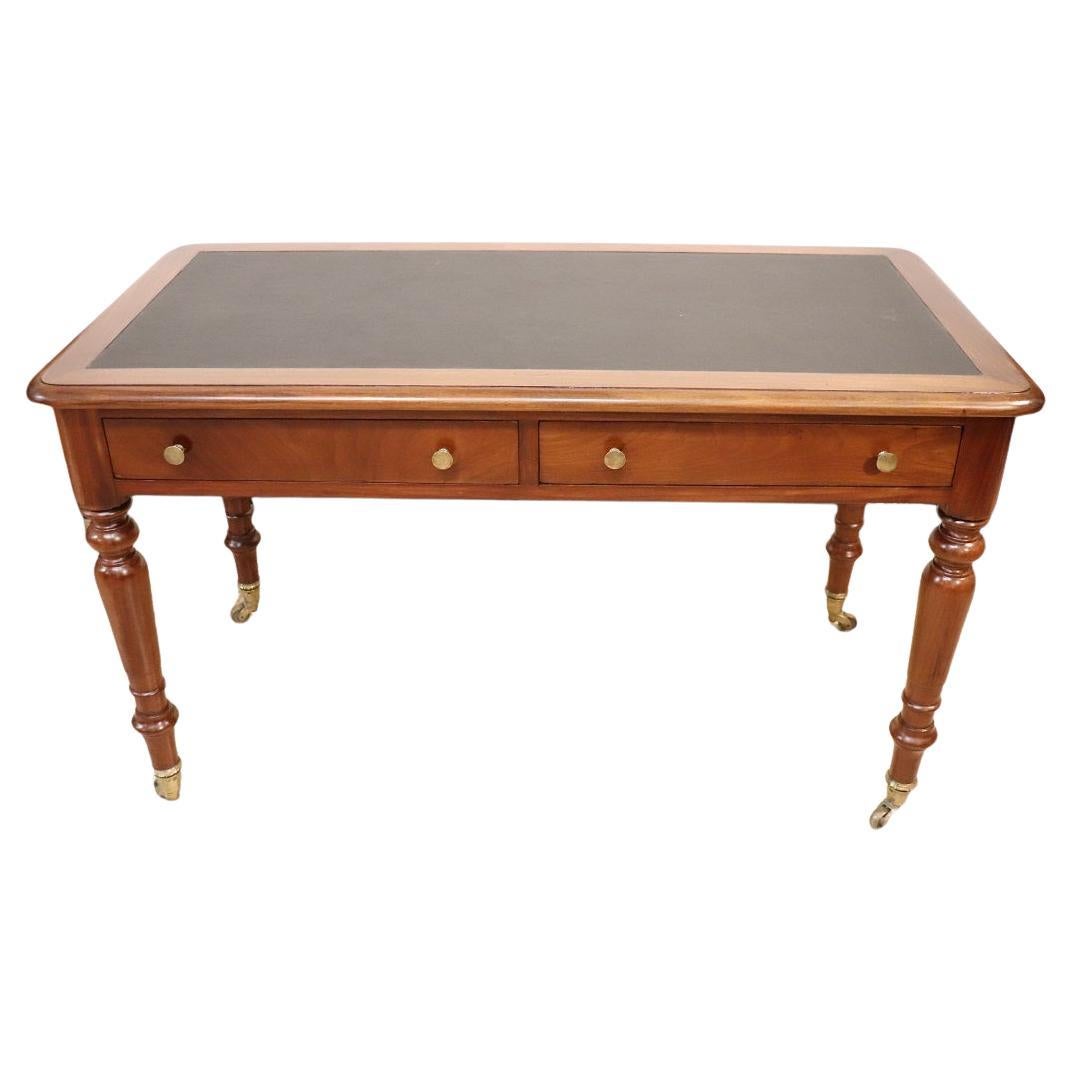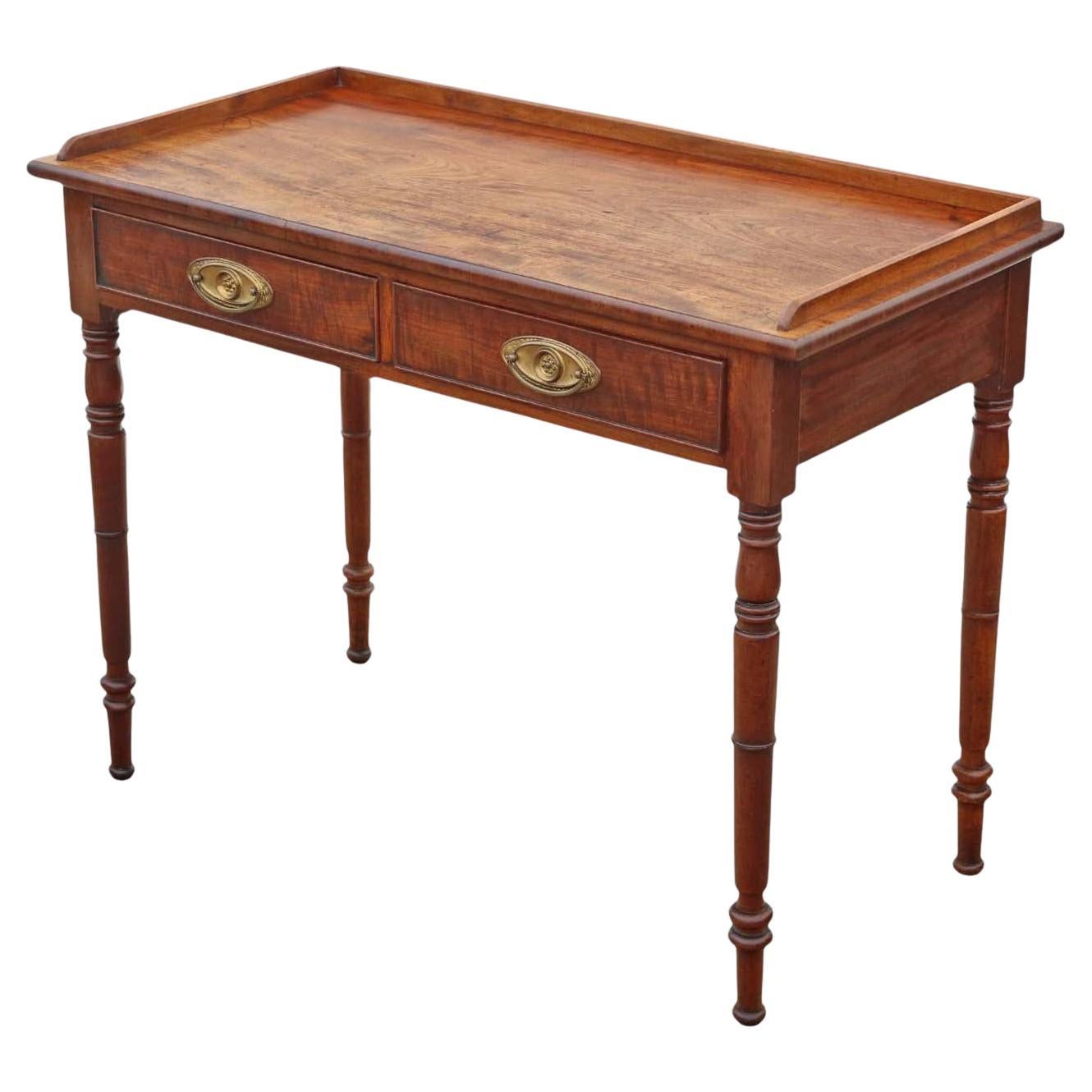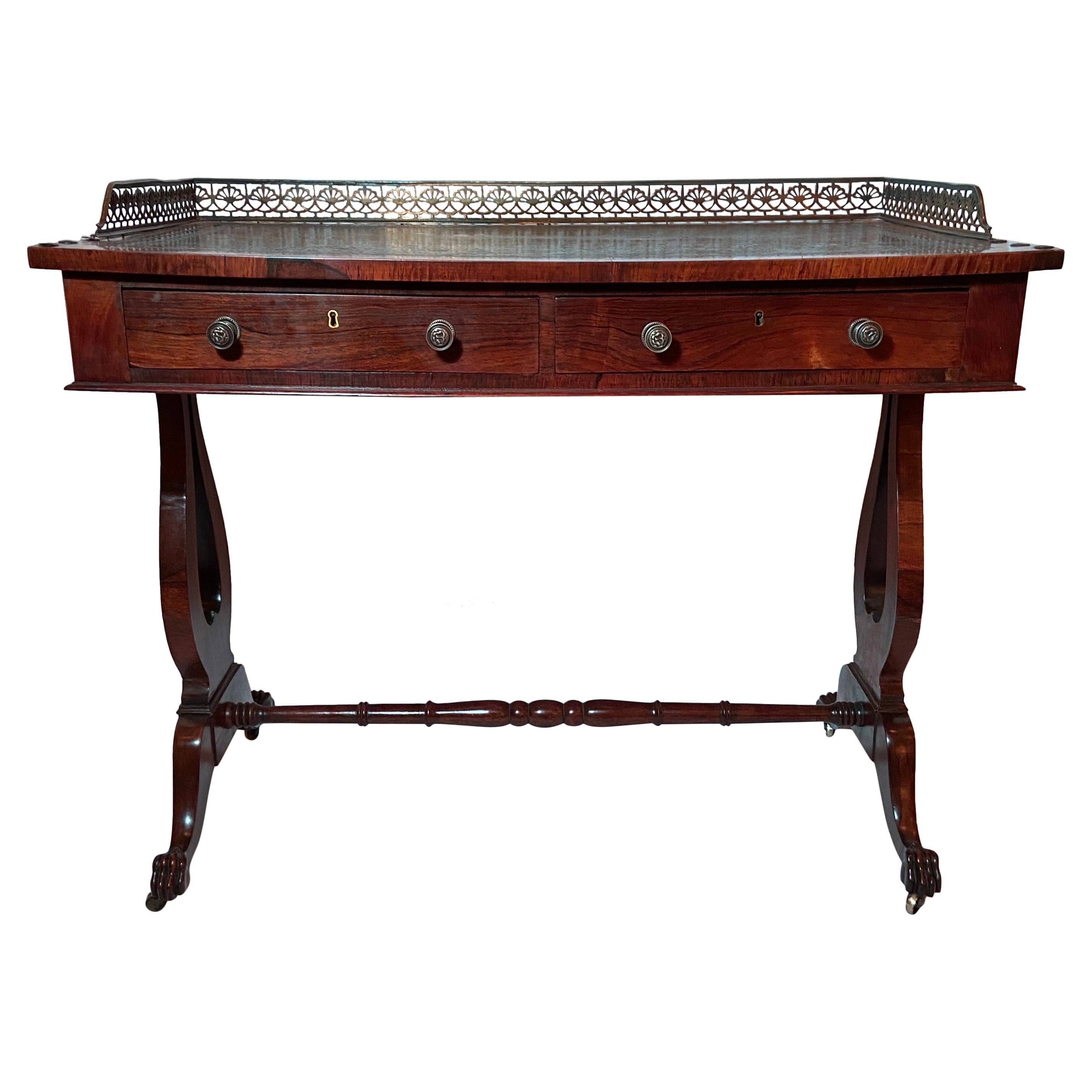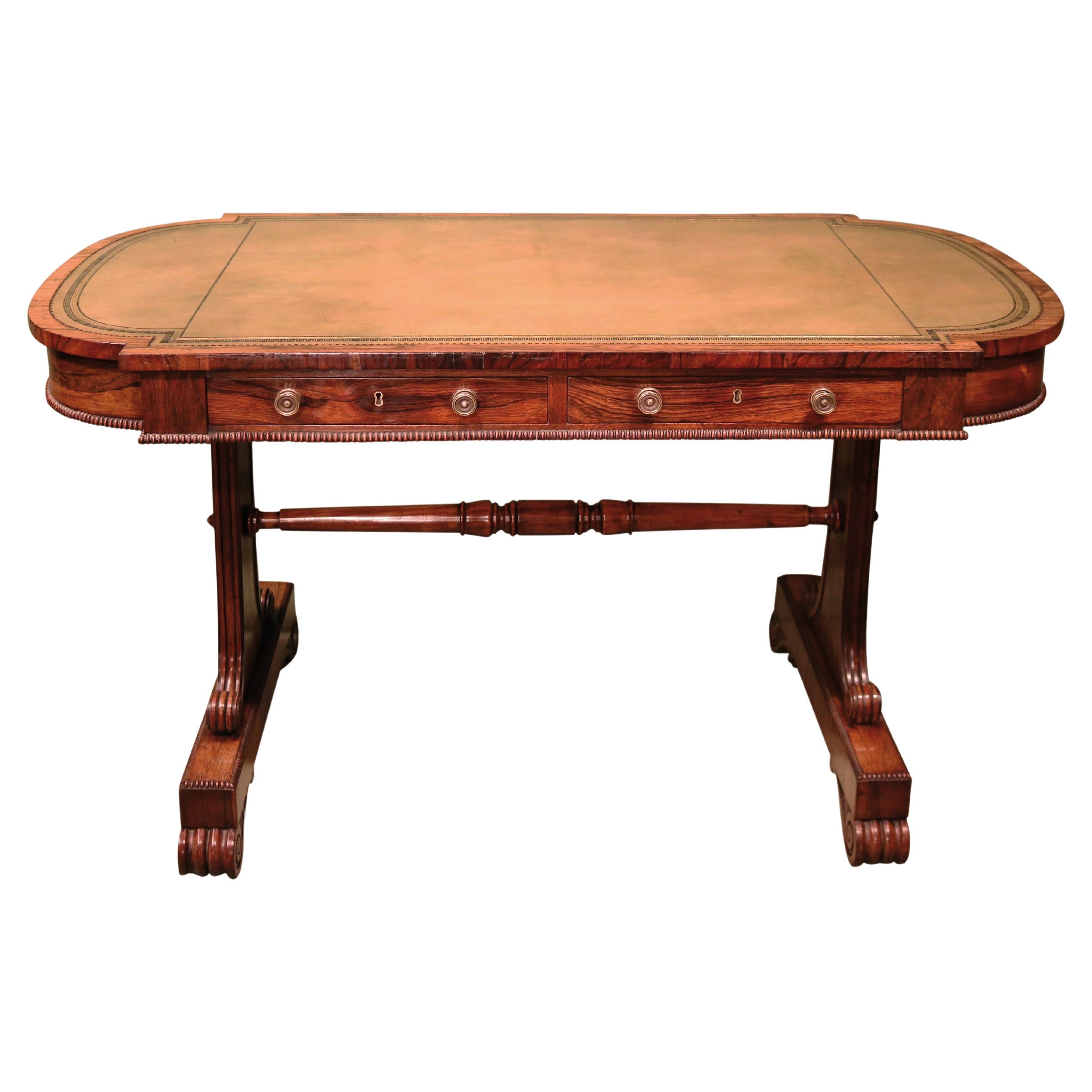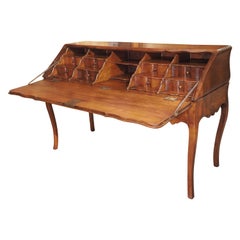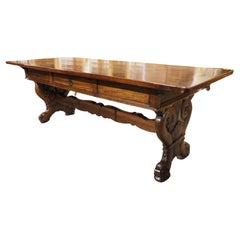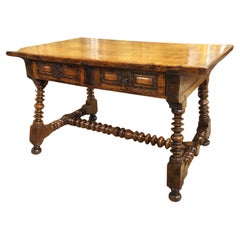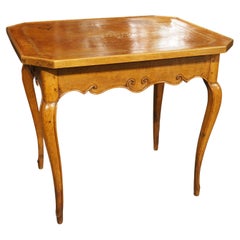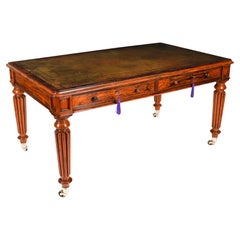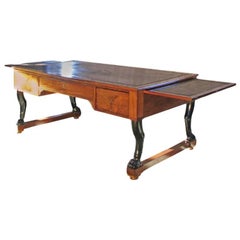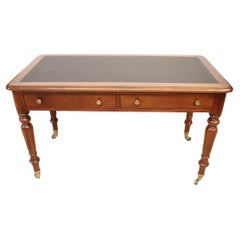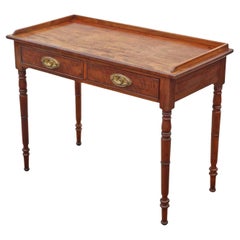Items Similar to Antique French Ecritoire Desk in Burled Elm, circa 1830
Want more images or videos?
Request additional images or videos from the seller
1 of 21
Antique French Ecritoire Desk in Burled Elm, circa 1830
$3,600
£2,718.39
€3,132.65
CA$5,081.13
A$5,601.83
CHF 2,930.70
MX$68,724.05
NOK 36,891.67
SEK 34,499.54
DKK 23,394.68
About the Item
This large and stylish 19th century French ecritoire is made of a beautiful burl elm veneer and ebonized wood with an intricate applique design to the top.
An ecritoire is typically a small, portable desk with interior compartments to hold writing materials, such as pens and ink. While in use, the ecritoire would be placed on the writer’s lap. There is a slanted hinged face, that when opened, forms the writing surface. As you can see, this version is larger than a standard ecritoire and does not have a slanted face. Ours was most likely originally part of a “cabinet d’apparat”, which is a large desk that served as an ornate showpiece. It could have been carried around to different rooms or residences to write up documents, drafts, or letters.
The true beauty of this desk lies in the top face, or lid. All four sides of the lid are comprised of ebonized wood trim. There is an interior border that is formed by applique white and black bead and spindle motifs. The corners and the medial positions are more intricately worked designs such as crowns, fleur de lys and scrolling foliage. In the recessed interior of the lid, there are several more pieces of applique with black inlay. In the epicenter of the lid is the focal point: a large rhombus piece with even more inlay. The motifs of the center include C scrolls and arabesque flowers.
Once the lid has been opened via it’s original brass hinge, there are two compartments on the right side. Beneath the lower compartment, there are two slots for inkwells – which are included. The metal wells are capped with silvered lids. One of the lids is perforated, which would have held the pounce or sand (pounce pot). This would have permitted the writer to sprinkle the sand on the paper before inking to aid in the drying process. Excess pounce was often poured back into the container. In the middle of the opened desk, there is a large compartment with a burgundy leather writing surface. Underneath the leather top, there are two secret drawers, which are accessible only after lifting the small leather pull.
The hinges, the lock plate and the lid stay are all made of brass. The sides of the desk are parquet veneer in a chevron pattern. Underneath, there are four bun feet made of ebonized wood.
This ecritoire desk is the largest example we have seen, and it would have been commissioned in the 1820’s or 1830’s. It would look fantastic in an library or home office setting and still maintains its functionality.
Dimensions when open: H – 27 1/2, W – 31, D – 22 3/4.
- Dimensions:Height: 7 in (17.78 cm)Width: 31 in (78.74 cm)Depth: 22.063 in (56.04 cm)
- Materials and Techniques:
- Place of Origin:
- Period:
- Date of Manufacture:circa 1830
- Condition:Repaired: One of the ebonized pieces of wood has been reglued to the veneer. Wear consistent with age and use. CONDITION: Very good antique condition with some minor old worming holes to interior. Working lock and key.
- Seller Location:Dallas, TX
- Reference Number:Seller: 620-171stDibs: LU906319987282
About the Seller
5.0
Platinum Seller
Premium sellers with a 4.7+ rating and 24-hour response times
Established in 1983
1stDibs seller since 2011
855 sales on 1stDibs
Typical response time: 1 hour
- ShippingRetrieving quote...Shipping from: Dallas, TX
- Return Policy
Authenticity Guarantee
In the unlikely event there’s an issue with an item’s authenticity, contact us within 1 year for a full refund. DetailsMoney-Back Guarantee
If your item is not as described, is damaged in transit, or does not arrive, contact us within 7 days for a full refund. Details24-Hour Cancellation
You have a 24-hour grace period in which to reconsider your purchase, with no questions asked.Vetted Professional Sellers
Our world-class sellers must adhere to strict standards for service and quality, maintaining the integrity of our listings.Price-Match Guarantee
If you find that a seller listed the same item for a lower price elsewhere, we’ll match it.Trusted Global Delivery
Our best-in-class carrier network provides specialized shipping options worldwide, including custom delivery.More From This Seller
View All18th Century French Cherrywood 'Bureau de Pente' Slant Top Writing Desk
Located in Dallas, TX
Larger than the typical Louis XV writing desk, this cherrywood bureau de pente was hand-carved in France during the late 1700’s, just after the period ended. This type of desk went by several names, including bureau dos d’âne and secrétaire à dessus brisé, and they almost always featured a fold-down writing surface.
Four long, slender cabriole legs, which are typical of Louis XV writing desks, provide a sturdy base for the beautiful desk. The curvaceousness of the legs continues throughout the desk, from the subtly contoured sides to the highly sinuous apron on all sides. Set within the apron are two drawers with round bronze pulls that flank a faux center drawer with a foliate and shell handle.
The fold-down writing surface, which has a functioning lock with a foliate escutcheon, opens to reveal eight small arbalete drawers arranged in four columns. Above the topmost drawers of each column is an open storage compartment. There are two more larger storage compartments in the center above a false-bottom hidden compartment. The fold down writing surface is held by a set of polished steel arms.
A graceful and functional bureau de pente from the late 18th century, this cherrywood slant top writing desk...
Category
Antique Late 18th Century French Louis XV Desks and Writing Tables
Materials
Brass
Antique Italian Renaissance Library Table in Carved Walnut, 17th C. and Later
Located in Dallas, TX
Measuring over 7.5 feet long, this handsome Italian library table could function as a console or large desk. Originally hand-carved from walnut, the table has some elements that are ...
Category
Antique 17th Century Italian Renaissance Desks and Writing Tables
Materials
Metal, Iron
17th Century Spanish Walnut Table or Desk with Turned Legs and Stretcher
Located in Dallas, TX
More information coming soon…
This fantastic Spanish walnut table dates to the 1600s and has incredibly turned legs and stretchers known as discus or lentil carvings. Each long sid...
Category
Antique 17th Century Spanish Desks and Writing Tables
Materials
Wood, Walnut
18th Century French Louis XV Fruitwood Occasional Table with Leather Top
Located in Dallas, TX
Known in France as a table d’apparat (ceremonial or formal table), this occasional table has been hand-carved in the style of Louis XV. Tables d’apparat were not intended for everyda...
Category
Antique Mid-18th Century French Louis XV Tables
Materials
Leather, Wood, Fruitwood
French Chestnut and Oak Desk from Le Grand Monarque À Chartres, circa 1720
Located in Dallas, TX
Hand-carved, circa 1720, using chestnut and oak woods, this desk was recently part of Le Grand Monarque hotel in Chartres, France. The desk has been stripped at some point, allowing the beautiful wood grain and round dowel construction to become focal points.
The stunning desk has a shaped top with quarter round molding. A 23 ½” W seat opening is topped by a concave front drawer with a bronze drop handle affixed by a pair of rosette mounts. Similar handles can be seen on each of the four main drawers, which are surrounded by thick cavetto molding. These drawers also have a scalloped keyplate and mounts of two putti hunting dragons hidden amongst foliage. Interestingly, the sides are comprised of four rectangular panels, with the two nearest to the straight back side being functional drawers.
Known as a bureau caissiers (“cashier’s desk...
Category
Antique 1720s French Louis XIV Desks and Writing Tables
Materials
Metal, Bronze
Antique Spanish 3-Drawer Mixed Wood Console Table, 19th Century
Located in Dallas, TX
Spanish tables pre-20th century featured less ornamentation than Italian and French offerings of the same time. Hand-carved additions, such as the two rows of shallow, triangular ke...
Category
Antique 19th Century Spanish Console Tables
Materials
Metal
You May Also Like
Antique George IV Goncalo Alves Writing Table Desk Early 19th Century
Located in London, GB
This monumental early George IV antique library writing table is crafted from beautiful Gonçalo Alves and dates from Circa 1820.
The rectangular top features a moulded edge with th...
Category
Antique 1820s English George IV Desks and Writing Tables
Materials
Leather
Early 19th century French Mahogany Empire Desk
Located in Troy, NY
Stately Empire desk on four monopodia legs painted a dark verdis gris, joined by two stretchers. Top inset with a tooled black leather writing surface and slide outs (16.5 inches eac...
Category
Antique 19th Century French Empire Desks and Writing Tables
Materials
Leather, Mahogany
19th Century Italian Wooden Small Antique Desk
Located in Casale Monferrato, IT
We present this elegant small Italian mahogany desk dating to the mid-19th century.
It features simple lines free of excessive ornamentation. The legs are crafted with refined turni...
Category
Antique 19th Century Italian Desks
Materials
Wood
Antique 19th Century Fine Quality Mahogany Writing Desk / Dressing Table
Located in Wisbech, Cambridgeshire
Antique 19th Century Fine Quality Mahogany Writing/Dressing Table – Also Ideal as a Desk or Side Table
This elegant antique table, dating from the 19th Century, features clean lines...
Category
Antique 19th Century Desks and Writing Tables
Materials
Mahogany
$1,924 Sale Price
30% Off
Antique English Regency Period Rosewood Writing Table, circa 1810-1820
Located in New Orleans, LA
Antique English William IV period rosewood writing table, Circa 1830.
Galleried top with leather and on original casters.
Category
Antique Early 19th Century English William IV Desks and Writing Tables
Materials
Leather, Rosewood
Early 19th Century Regency Period Rosewood Writing Table
Located in London, GB
A fine early 19th century Regency period rosewood writing table, having rectangular bow end tooled leather top, above beaded frieze with 2 real & 2 dummy drawers raised on end-suppor...
Category
Antique Early 19th Century English Regency Desks and Writing Tables
Materials
Rosewood
More Ways To Browse
Metal French Desk
French Elm Wood
Ornate Desk
Large Antique Wood Desk
Antique Brass Desk Accessories
Antique Desk Small
Lift Top Desk
French Library Desk
Library Accessories
Black French Desk Leather Top
Ebonized Wood Desk
Decorative Plates Set Of 2 Large
French Writing Desk Leather Inlay
Antique Silver Desk Set
Antique Writing Desk With Secret Compartments
Antique Wood Appliques
Antique Desk Portable
Antique Veneer Desks
